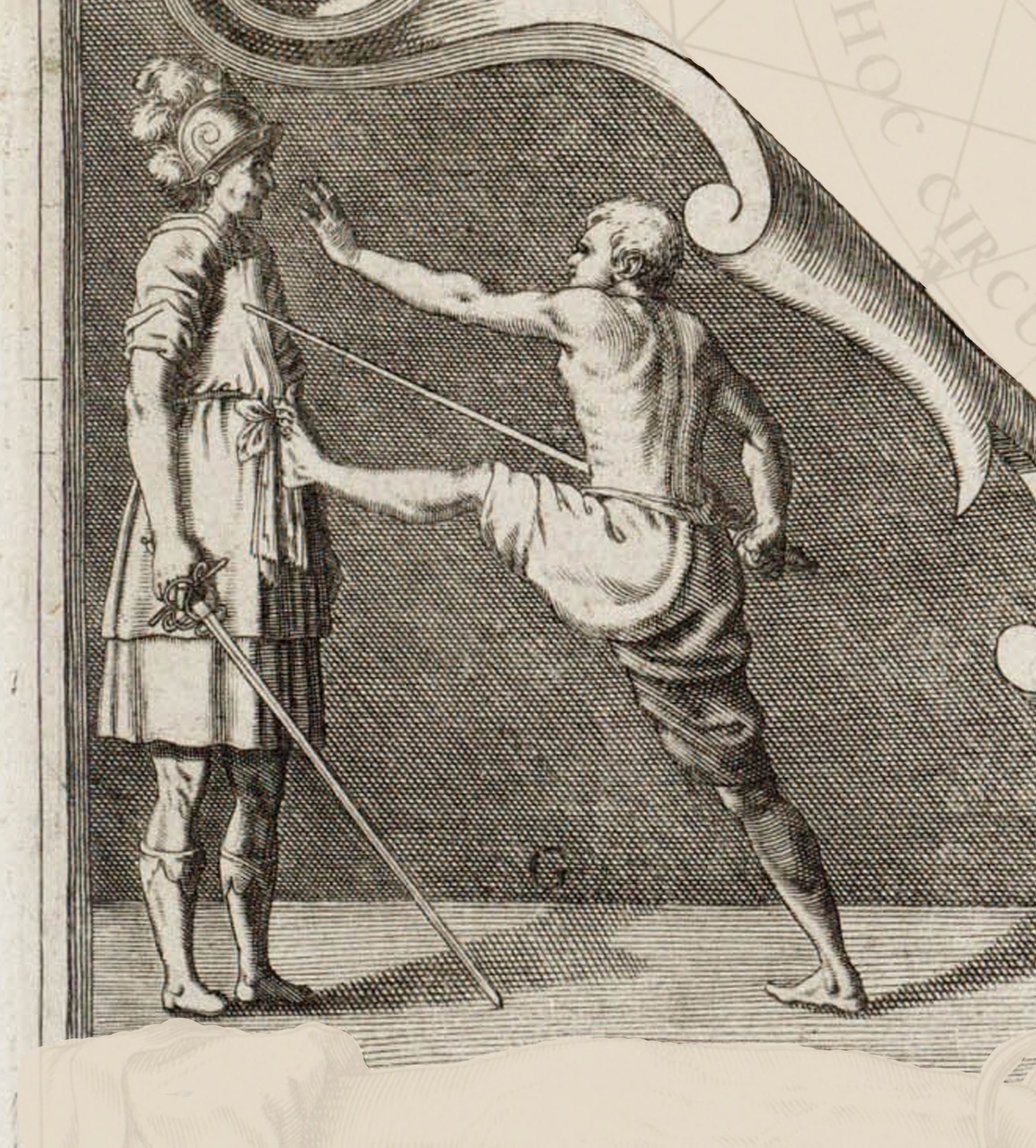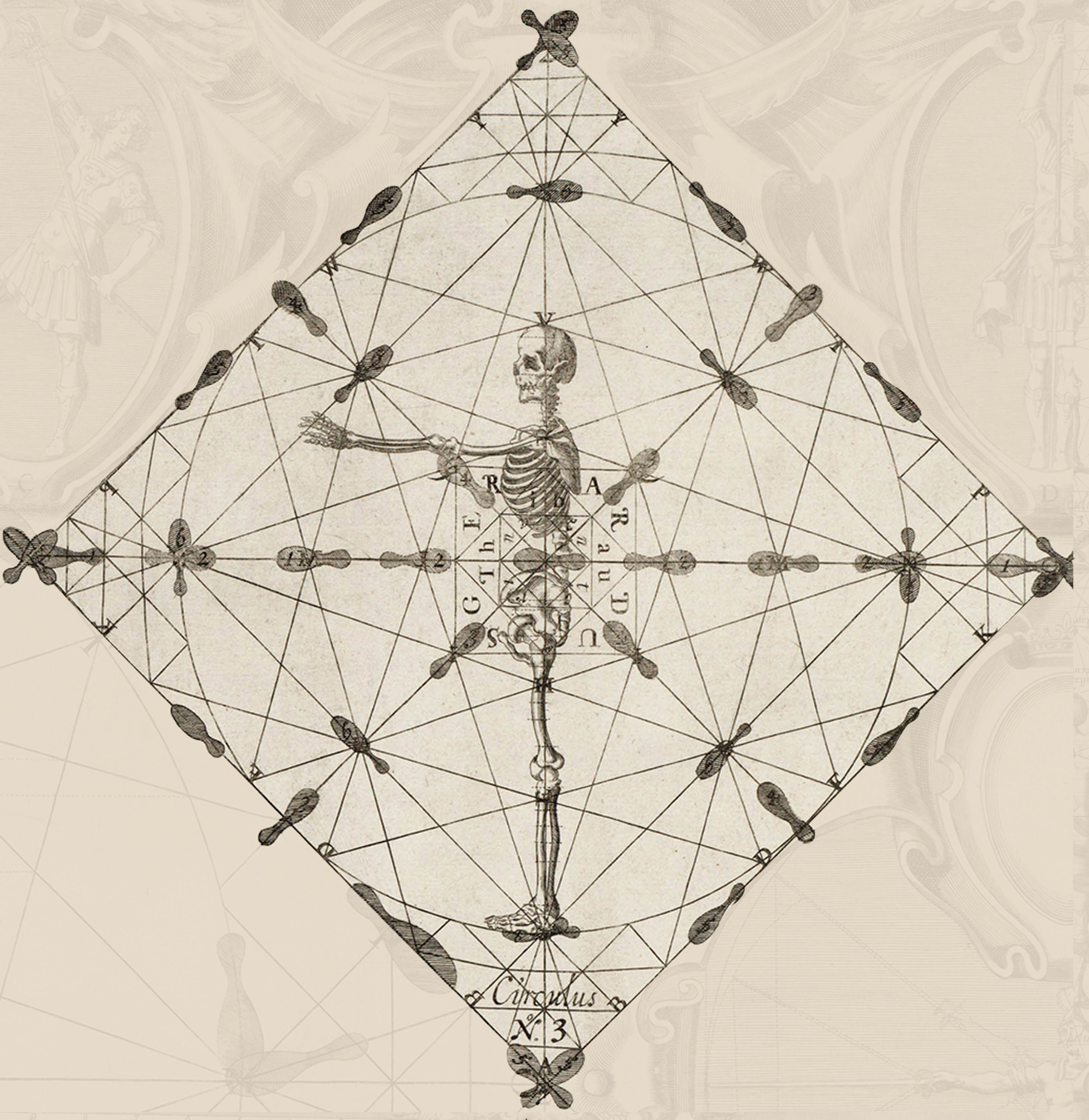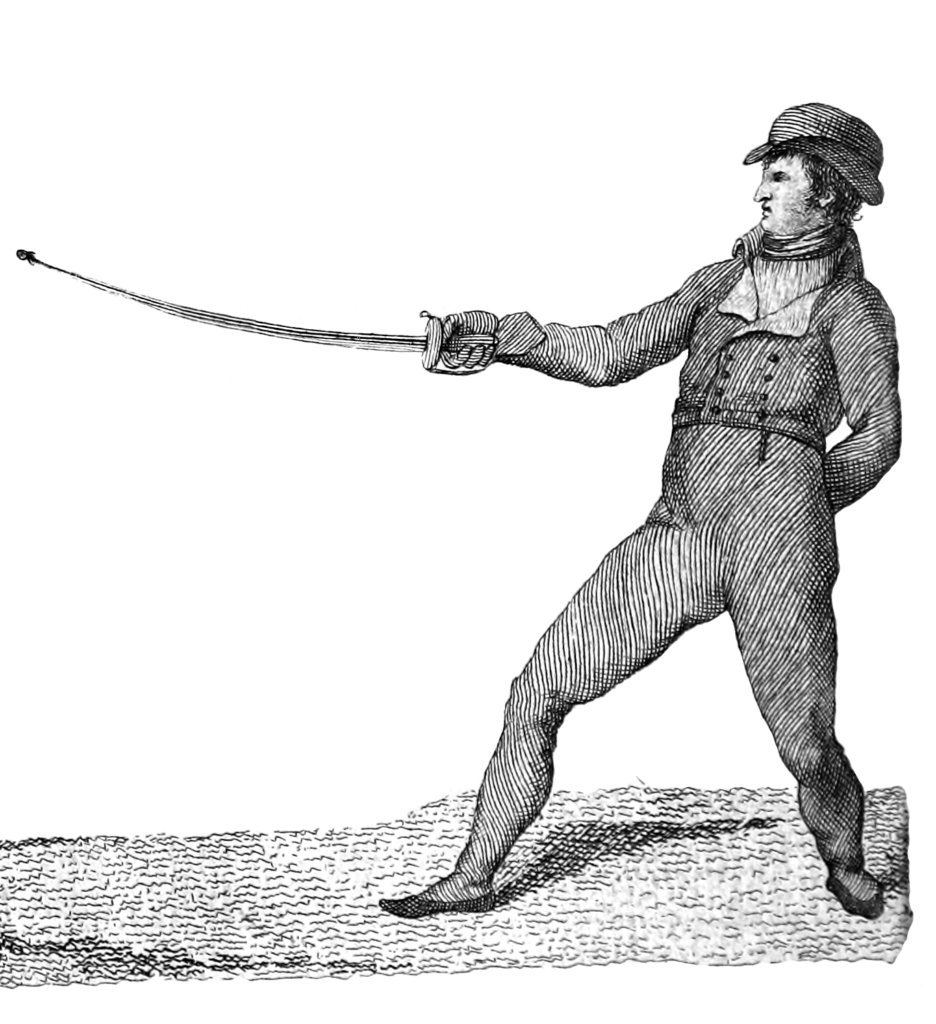431. In all of the arts and sciences, there are opinions and operations commendable only by repetition and without a rational and exhaustive examination. Regardless of this the authorities on some subjects recommend them as the sole source of truth. Such has been the fate of this mechanism, useful only (according to my judgement) to finish off the most powerful arms, and to fill the incapable minds with mistakes to analyze their ideas.
432. The name of moulinet is given to an evolution of the sabre that, according to some too little educated, or too concerned, was invented and executed to disarm the enemy. It may well be able to achieve that end, but it should be under these suppositions: first, that the enemy is so ignorant and so little desirous of their own preservation that they will voluntarily surrender their arm and weapon to the action of the contrary. Second, that the one who does the moulinet is capable of an operation so violent and so little arranged as to direct it in conformity to his will. However, as these assumptions are absolutely arbitrary, it seems to me that the actor should more easily disarm himself than to obtain this in his adversary.
433. To demonstrate the truth of my previous propositions, I judge not to need any other test than to describe the moulinet. It is done in this manner. Putting the sabre in the common guard, he bends the arm, gathering the hand to his left shoulder, turning fully into third, raising the guard and the elbow to the height of the superior plane, forming the removal of first with the edge looking back and, from here, he will throw a vertical cut on the line of the diameter and at the height of the same superior plane. Concluding this, he turns his hand fully in fourth and, in t this same, bends the arm a second time, joining the elbow to the breast, making the guard of the sabre take the greatest immediacy to the right shoulder. From there, execute a vertical reverse on the same line of the diameter and at the same height as the previous, making these movements tied from one side to the other, with so much speed and repetition that the sight can scarcely follow the guard and point in them.
434. The whole of these movements represents vertical circles formed with the point of the sabre that, joined on the line of the diameter, separate on the sides the precise amount so that the body of the executor fits between them. This operation is done marching, retiring, or firm footed.
435. To oppose this illusory action, which is believed to have no opposition to fight it, no more is necessary than to go back a step with the others advance, taking the weapon with the point higher than the supreme plane, your guard at the height of their guard or a little higher, and your elbow joined to your right vertical. If the enemy retires or stands firm footed, keep the defensive measure, laughing meanwhile at the futility of their efforts and waiting for that powerful arm to disarm itself, or for the contrary, being satisfied that it is not useful for battle, to crown with a shameful escape the gallantry of his attack.
436. When the enemy Is more deserving of punishment than of contempt, observe in the evolution the moment in which the parry of first is formed. In this same time, reach a vertical to the arm, or a thrust of second. If this moment escapes, at the time he conducts his sabre to the right shoulder, execute a thrust of first or a horizontal cut to the arm, either inside or outside. You can also let him form the vertical and, at the time of execution, close with high third, gain on this a conclusion or hand blow. This evolution will only be useful to acquire facility of the wrist and promptness in the movements.























